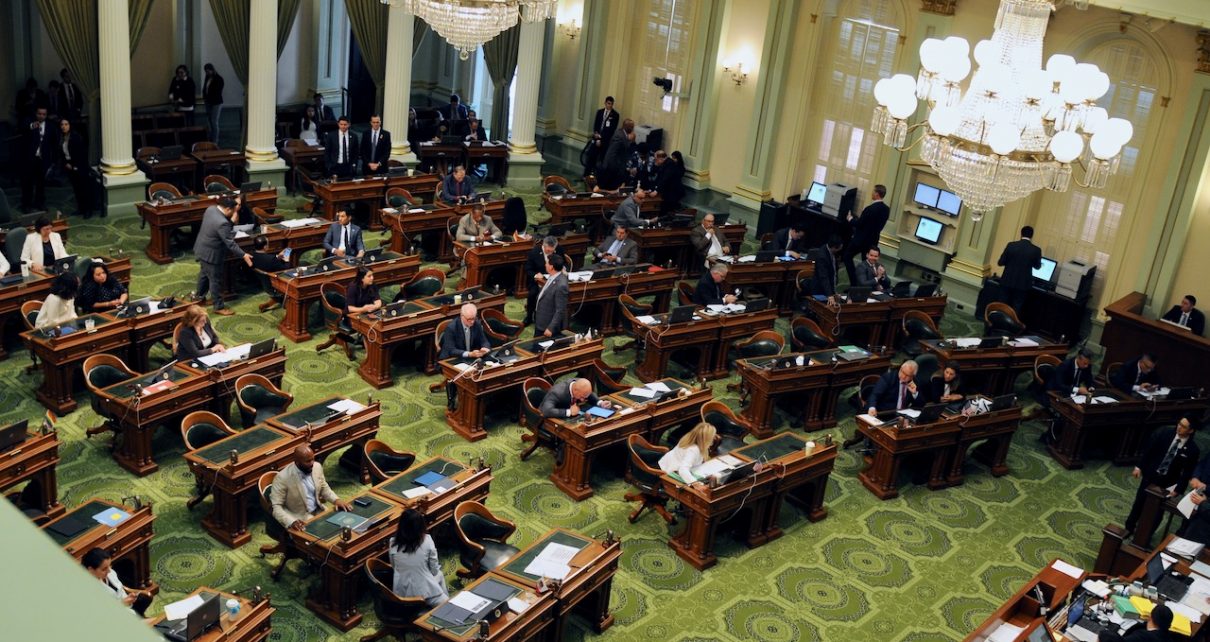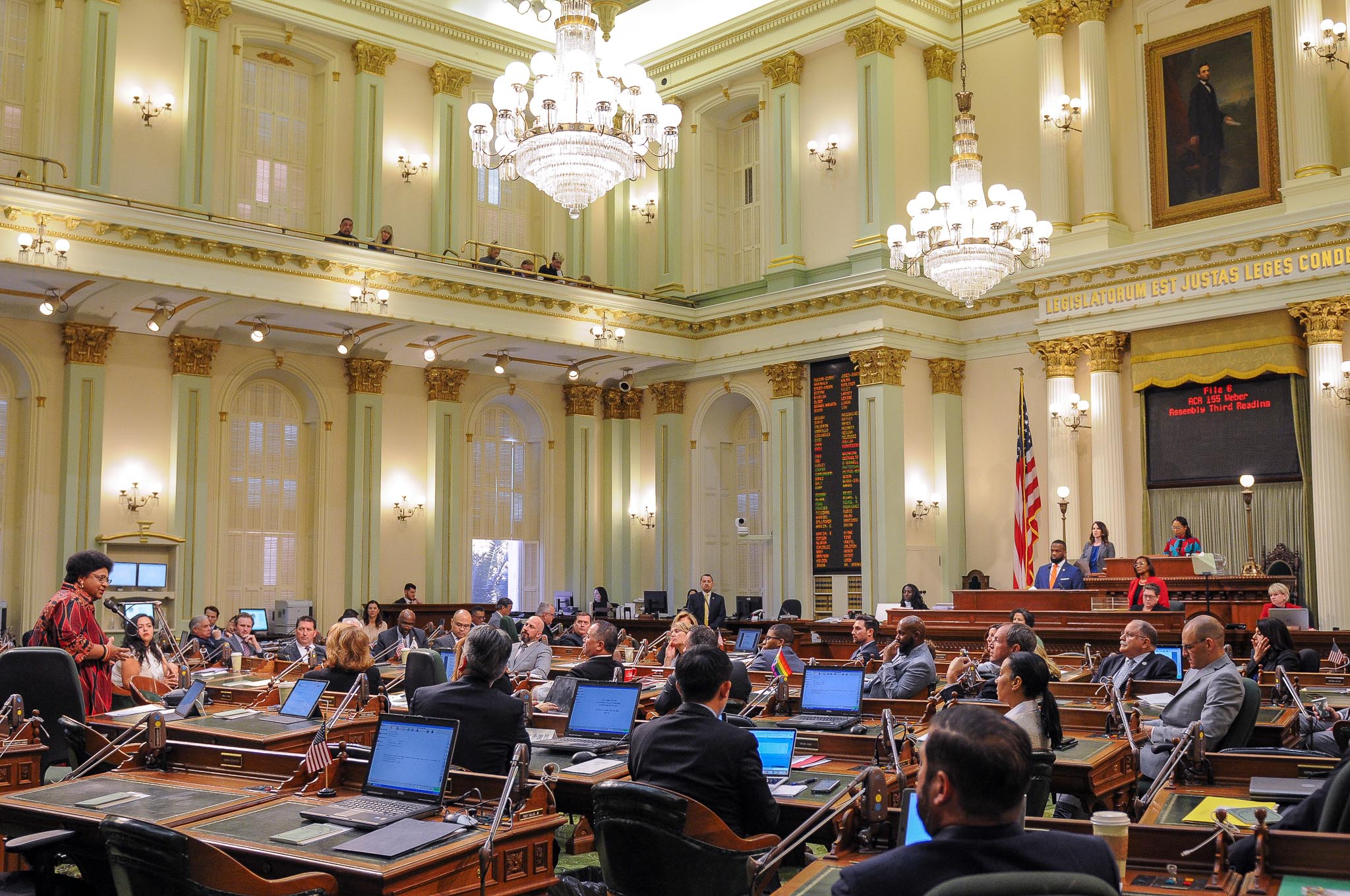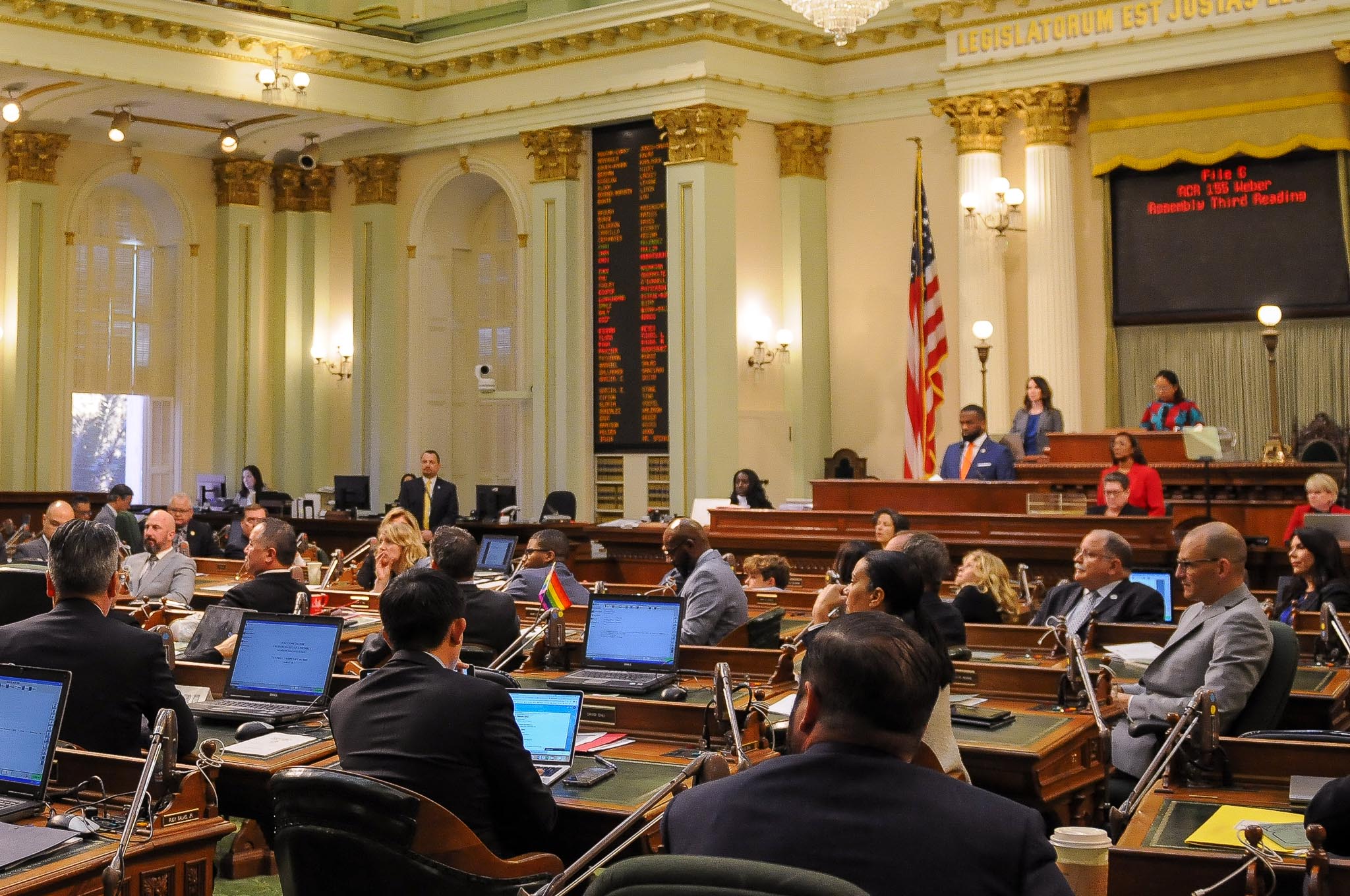
California State Assembly Chamber. (Photo: Kevin Sanders for California Globe)
Privileges in California’s Evidence Code
Chapter 5 contains an immunity of newsman from citation for contempt
By Chris Micheli, April 9, 2022 12:49 pm
California’s Evidence Code provides a number of statutory privileges. They are contained in Division 8, Sections 900 – 1070. Chapter 1 contains definitions in Sections 900 – 905. The definitions in Chapter 1 govern the construction of Division 8. The following terms are defined: “proceeding,” “civil proceeding,” “criminal proceeding,” and “presiding officer.”
Chapter 2 provides for the applicability of Division 8, which is that the provisions of Division 8 apply in all proceedings. The provisions of any statute making rules of evidence inapplicable in particular proceedings, or limiting the applicability of rules of evidence in particular proceedings, do not make this division inapplicable to such proceedings.
Chapter 3 contains general provisions relating to privileges.
Chapter 4 contains particular privileges. Article 1 contains the privilege of a defendant in a criminal case and provides that, to the extent that such privilege exists under the Constitution of the United States or the State of California, a defendant in a criminal case has a privilege not to be called as a witness and not to testify.
Article 2 contains the privilege against self-incrimination. Section 940 provides that, to the extent that such privilege exists under the Constitution of the United States or the State of California, a person has a privilege to refuse to disclose any matter that may tend to incriminate him.
Article 3 contains the lawyer-client privilege and defines the terms “lawyer,” “client,” “confidential communication between client and lawyer,” and “holder of the privilege.” In this privilege, the client, whether or not a party, has a privilege to refuse to disclose, and to prevent another from disclosing, a confidential communication between client and lawyer if the privilege is claimed by certain individuals. There are also specific circumstances in which there is no privilege.
Article 3.5 contains a lawyer referral service – client privilege in Sections 965 – 968 and provides that the client, whether or not a party, has a privilege to refuse to disclose, and to prevent another from disclosing, a confidential communication between client and lawyer referral service if the privilege is claimed by specified persons.
Article 4 contains a privilege not to testify against a spouse. Sections 970 – 973 provide that a married person has a privilege not to testify against his spouse in any proceeding. There are specified instances where a married person does not a privilege.
Article 5 contains a privilege for confidential martial communications in Section 980 – 987 and provides that a spouse (or his or her guardian or conservator when he or she has a guardian or conservator), whether or not a party, has a privilege during the marital or domestic partnership relationship and afterwards to refuse to disclose, and to prevent another from disclosing, a communication if he or she claims the privilege and the communication was made in confidence between him or her and the other spouse while they were spouses. There are also numerous circumstances where the privilege does not apply.
Article 6 contains a physician – patient privilege in Sections 990 – 1007 provide the patient, whether or not a party, has a privilege to refuse to disclose, and to prevent another from disclosing, a confidential communication between patient and physician if the privilege is claimed specified persons. The terms “physician,” “patient,” “confidential communication between patient and physician,” and “holder of the privilege” are defined. There are also numerous circumstances where the privilege does not apply.
Article 7 contains a psychotherapist – patient privilege in Sections 1010 – 1027 and provides a communication between a patient and an educational psychologist shall be privileged to the same extent, and subject to the same limitations, as a communication between a patient and a psychotherapist. The terms “psychotherapist,” “patient,” “confidential communication between patient and psychotherapist,” “holder of the privilege” are defined.
Article 8 contains clergy penitent privileges in Sections 1030 – 1034 and provide that a penitent, whether or not a party, has a privilege to refuse to disclose, and to prevent another from disclosing, a penitential communication if he or she claims the privilege, and a is member of the clergy, whether or not a party, has a privilege to refuse to disclose a penitential communication if he or she claims the privilege. The terms “member of the clergy,” “penitent,” “penitential communication”
Article 8.5 contains a sexual assault counselor – victim privilege and Sections 1035 – 1036.2 a victim of a sexual assault, whether or not a party, has a privilege to refuse to disclose, and to prevent another from disclosing, a confidential communication between the victim and a sexual assault counselor if the privilege is claimed by specified persons. The terms “victim,” “sexual assault counselor,” “confidential communication between the sexual assault counselor and the victim,” “holder of the privilege.”
Article 8.7 contains a domestic violence counselor-victim privilege and Sections 1037 – 1037.8 provide a victim of domestic violence, whether or not a party to the action, has a privilege to refuse to disclose, and to prevent another from disclosing, a confidential communication between the victim and a domestic violence counselor in specified proceedings if the privilege is claimed by specified persons. The terms “victim,” “domestic violence counselor,” “confidential communication,” “domestic violence,” “holder of the privilege” are defined.
Article 8.8 contains a human trafficking caseworker-victim privilege and Sections 1038 – 1038.3 trafficking victim, whether or not a party to the action, has a privilege to refuse to disclose, and to prevent another from disclosing, a confidential communication, whether made orally, in writing, or otherwise conveyed, between the victim and a human trafficking caseworker if the privilege is claimed by specified persons.
Article 9 relates to official information and the identity of an informer and Sections 1040 – 1047 provides that a privilege to refuse to disclose official information, and to prevent another from disclosing official information, if the privilege is claimed by a person authorized by the public entity to do so and certain circumstances apply. The term “official information” is defined.
Article 10 relates to political votes and Section 1050 provides that a person has a privilege to refuse to disclose the tenor of his vote at a public election where the voting is by secret ballot unless he voted illegally or he previously made an unprivileged disclosure of the tenor of his vote.
(Enacted by Stats. 1965, Ch. 299.)
Article 11 relates to trade secrets and Sections 1060 – 1063 provide that the owner of a trade secret has a privilege to refuse to disclose the secret, and to prevent another from disclosing it, if the allowance of the privilege will not tend to conceal fraud or otherwise work injustice. The term “trade secret” is defined.
Chapter 5 contains an immunity of newsman from citation for contempt. Section 1070 provides that a publisher, editor, reporter, or other person connected with a newspaper, magazine, or other periodical publication cannot be adjudged in contempt by a judicial, legislative, administrative body, or any other body having the power to issue subpoenas, for refusing to disclose the source of any information procured while so connected or employed for publication in a newspaper, magazine or other periodical publication, or for refusing to disclose any unpublished information obtained or prepared in gathering, receiving or processing of information for communication to the public.
- Harbor Commissions in California - December 5, 2025
- Mediation Proceedings in Child Custody Cases - December 5, 2025
- Recent Legal Challenges to California Statutes - December 4, 2025





One thought on “Privileges in California’s Evidence Code”